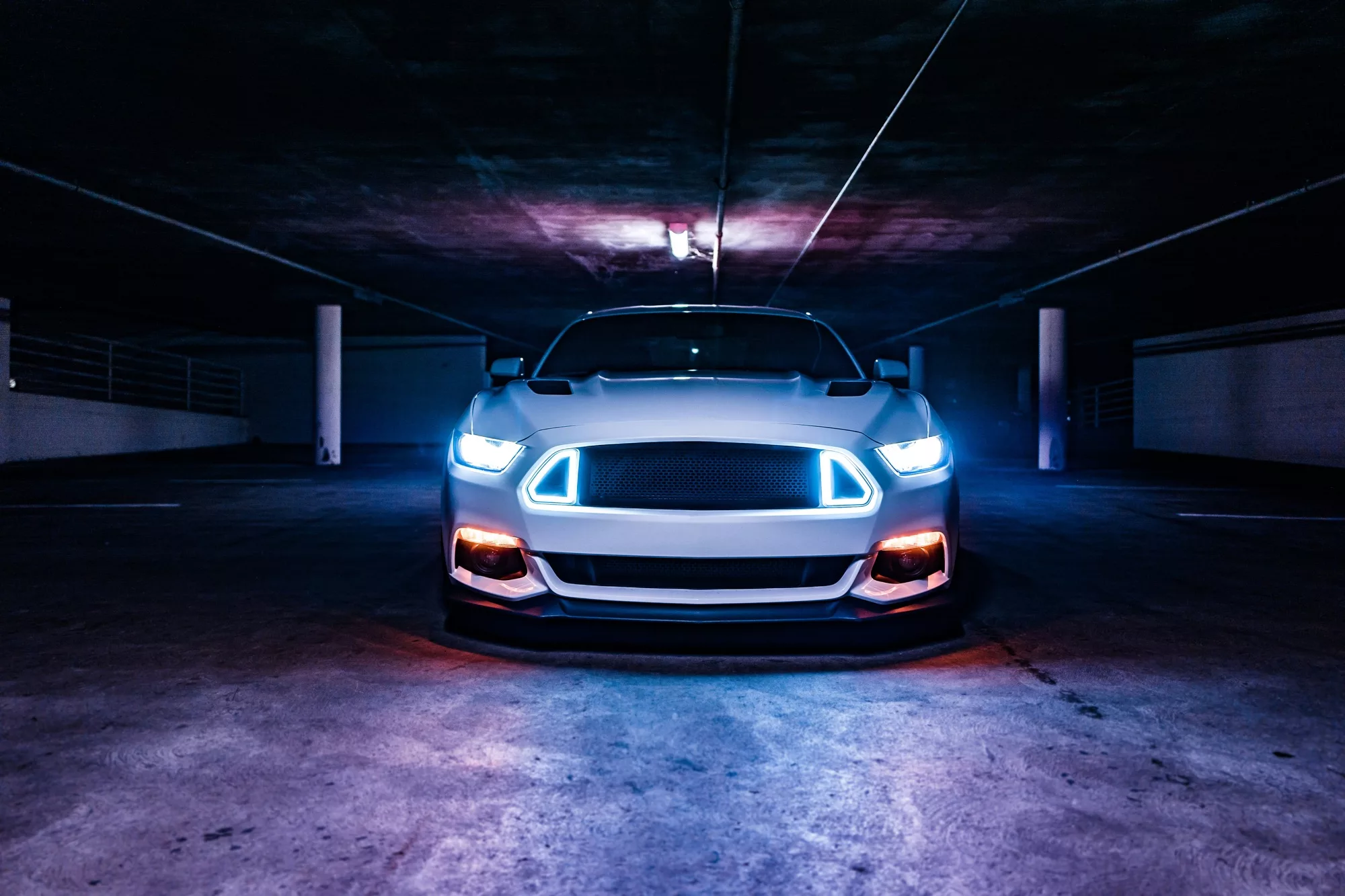Headlights are one of the most important safety features on any vehicle. They illuminate the road ahead, ensure visibility for the driver, and make the vehicle noticeable to others in low-light conditions. Over the years, headlight technology has evolved significantly, with halogen headlights once dominating the market and now being gradually replaced by more advanced LED (light-emitting diode) systems. This shift raises an important question: what are the differences between LED and halogen headlights, and is one better than the other?
Both technologies have distinct advantages and drawbacks, depending on factors like brightness, longevity, energy efficiency, and cost. Understanding these differences is key to choosing the right headlight system for your vehicle. In this article, we’ll dive into the technical details of LED and halogen headlights, comparing their performance, benefits, and downsides to determine which option suits various needs.
Understanding Halogen Headlights
Halogen headlights are the most traditional type of headlight and have been used in vehicles for decades. They are a variation of incandescent lighting technology, operating on a relatively simple principle.
How Halogen Headlights Work
Halogen bulbs contain a tungsten filament enclosed in a glass housing filled with halogen gas, such as iodine or bromine. When electricity passes through the filament, it heats up and produces light. The halogen gas helps redeposit tungsten particles back onto the filament, extending its lifespan and maintaining brightness over time.
This design is cost-effective and straightforward, making halogen headlights the default choice for most vehicles until more advanced technologies, like LEDs, entered the market.
Advantages of Halogen Headlights
- Affordability: Halogen bulbs are inexpensive to manufacture and replace, making them a cost-effective option for drivers on a budget.
- Widespread Availability: Due to their long-standing use, halogen headlights are widely available and can be found for nearly any make or model of vehicle.
- Ease of Replacement: Replacing a halogen bulb is typically straightforward, requiring minimal tools or technical knowledge.
Disadvantages of Halogen Headlights
- Lower Brightness: Halogen bulbs produce less light compared to LED headlights, which can limit visibility in poorly lit or adverse weather conditions.
- Shorter Lifespan: The average lifespan of a halogen bulb is around 500 to 1,000 hours, meaning they require more frequent replacements.
- Energy Inefficiency: Halogen headlights consume more energy, as much of the energy is lost as heat rather than light.
Understanding LED Headlights
LED headlights represent a more modern and advanced lighting technology, offering significant improvements in brightness, efficiency, and longevity. They are becoming increasingly common in new vehicles and are often associated with premium features.
How LED Headlights Work
LED headlights use light-emitting diodes to produce light. When an electrical current passes through a semiconductor within the LED, it excites electrons, releasing energy in the form of photons (light). This process is highly efficient, generating bright light with minimal energy loss as heat.
Unlike halogen bulbs, LEDs are directional, meaning they focus light more precisely, reducing scatter and glare for oncoming drivers.
Advantages of LED Headlights
- Brightness: LED headlights produce significantly brighter and whiter light, improving visibility for drivers and enhancing road safety.
- Energy Efficiency: LEDs consume far less energy than halogen bulbs, reducing the strain on the vehicle’s electrical system and improving fuel efficiency.
- Long Lifespan: With an average lifespan of 20,000 to 30,000 hours, LED headlights last much longer than halogen bulbs, requiring fewer replacements.
- Design Flexibility: LEDs are compact and versatile, allowing manufacturers to design sleeker, more aesthetically pleasing headlight systems.
Disadvantages of LED Headlights
- Higher Cost: LED headlights are more expensive to produce and install, increasing the upfront cost for consumers.
- Complex Installation: LED systems often require specialized fixtures or wiring, making replacements more complicated and costly than halogen bulbs.
- Potential for Overheating: While LEDs generate minimal heat at the light source, their electronic components can overheat without proper cooling mechanisms.
Comparison of LED and Halogen Headlights
To better understand the differences between LED and halogen headlights, let’s compare them across key performance metrics:
1. Brightness and Visibility
One of the most noticeable differences between LED and halogen headlights is their brightness. Halogen headlights emit a warm, yellowish light that is less intense, providing adequate visibility but falling short in poorly lit areas. In contrast, LED headlights produce a bright, white light that closely resembles daylight, significantly improving visibility and reducing eye strain.
Winner: LED headlights, for superior brightness and clarity.
2. Energy Efficiency
LED headlights are far more energy-efficient than halogen bulbs. They require less power to produce brighter light, making them an eco-friendly option. This efficiency also reduces the load on the vehicle’s alternator, potentially improving fuel economy.
Winner: LED headlights, for better energy savings.
3. Lifespan
Halogen bulbs have a relatively short lifespan, typically lasting 500 to 1,000 hours. In comparison, LED headlights can last up to 30,000 hours or more, often outlasting the lifespan of the vehicle itself.
Winner: LED headlights, for unparalleled longevity.
4. Cost
Halogen headlights are significantly cheaper to produce, purchase, and replace. This makes them an attractive option for budget-conscious drivers. On the other hand, LED headlights come with a higher upfront cost, although their longevity and efficiency may offset this expense over time.
Winner: Halogen headlights, for affordability.
5. Ease of Replacement
Replacing a halogen bulb is usually a straightforward process that most drivers can do themselves. In contrast, replacing LED headlights often requires professional assistance due to their complex design and integration with vehicle systems.
Winner: Halogen headlights, for simplicity.
Safety Considerations
Both LED and halogen headlights have implications for road safety, affecting visibility, glare, and nighttime driving comfort.
1. Glare and Beam Control
LED headlights, when poorly designed or improperly aligned, can cause excessive glare for oncoming drivers. However, their precise beam control reduces light scatter, ensuring better focus on the road. Halogen headlights, while less bright, produce a more diffused beam that is less likely to cause glare.
2. Nighttime Driving
The bright white light of LEDs enhances nighttime visibility, making it easier to spot hazards and navigate dark roads. Halogen headlights, with their warmer light, may not provide the same level of clarity, particularly in rural or poorly lit areas.
Overall: LED headlights offer better safety benefits, but proper installation and alignment are crucial to avoid glare issues.
Which Headlight Is Better for You?
Choosing between LED and halogen headlights depends on your specific needs, preferences, and budget. Here are some scenarios to help guide your decision:
Choose Halogen Headlights If:
- You are looking for an affordable lighting solution.
- You drive primarily in well-lit urban areas where ultra-bright headlights are not necessary.
- You prefer simple, low-maintenance lighting systems.
Choose LED Headlights If:
- You prioritize brightness and visibility for nighttime or rural driving.
- You want a long-lasting, energy-efficient lighting system.
- You are willing to invest more upfront for improved performance and safety.
Future Trends in Headlight Technology
The headlight industry is continually evolving, with emerging technologies such as laser headlights and adaptive lighting systems offering even greater performance and efficiency. LEDs are likely to remain the dominant choice for modern vehicles due to their versatility and energy efficiency. As manufacturing costs decrease, LED headlights may become standard even in entry-level vehicles, replacing halogen systems entirely.
Conclusion
When it comes to comparing LED and halogen headlights, there is no one-size-fits-all answer. Halogen headlights are affordable, widely available, and easy to replace, making them a practical choice for many drivers. However, LED headlights excel in brightness, energy efficiency, and longevity, offering superior performance for those willing to invest in modern technology.
Ultimately, the best choice depends on your driving habits, budget, and priorities. Whether you opt for the simplicity of halogen or the advanced features of LED, understanding the differences between these technologies can help you make an informed decision and ensure safe, reliable lighting for your vehicle.




